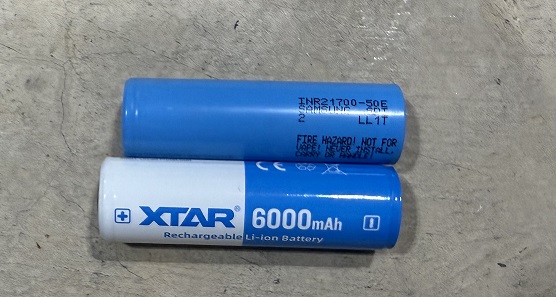
How Many 18650 Batteries Can You Put In Parallel?
Table of Contents
There is no technical limit to how many 18650 batteries can be put in parallel. After about 25, however, you want to use fuses.
When putting 18650 batteries or really any other kind of batteries in parallel, what you're doing is connecting all the positives to all the cells together and all the negatives to all the cells together. If the cells are all the same and at the same voltage before connecting them, then no current will be able to flow between the 18650 batteries. This allows for an unlimited number of cells to be connected in parallel.
Benefits of Putting 18650 Batteries in Parallel
There are several good reasons to put 18650s in parallel. The capacities of the cells are added together when you put them in parallel. This means that if you have two cells with a capacity of 2000mAh each when connected in parallel, they will have a combined capacity of 4000mAh.
When you add 18650 batteries in parallel, their current carrying capacity is added together. This means that if you have two cells with a current carrying capacity of 10A each when connected in parallel they will have a combined current carrying capacity of 20A. When building a lithium battery pack with 18650 cells it's common to see multiples of cells in parallel to be able to handle the motors current requirements.
The resistance is cut in half if you put two 18650 batteries in parallel. This means that if you have two cells with a resistance of 0.2 ohms each when connected in parallel, they will have a combined resistance of 0.1 ohms.
Dangers of Putting 18650 Batteries in Parallel
While there are many benefits to putting 18650 batteries in parallel, there are also some dangers. After about 20 or 30 in parallel, the danger exponentially increases. If anything happens to any one cell in any parallel group, it affects all the other cells.
If you have three cells in your parallel group and one cell goes bad and drops to zero volts, the other cells will be put under that load and will send power to that dead cell. If that happens with 50 cells that are all in parallel with a very low resistance, a tremendous amount of current can flow, which can cause a fire or explosion.
So, to make using this many 18650s in parallel safe and reliable, it's good to use cell-level fusing. With cell level fusing, if anything bad happens to any one of your cells, it will be removed from the associated p group.
Will Two Batteries in Parallel Equalize?
Yes! This is why it's so important to make sure your batteries or battery cells are all at the same voltage (or within 0.1 volts of each other) before connecting them. If two voltage sources are not at the same voltage when being connected, the amount of current that will flow is dictated by Ohm's law. Considering the fact that 18650 batteries have extremely low internal resistance, this means that a lot of current is going to flow.
Remember, at a cell level, there is no BMS there to protect you. Even if there is a BMS, it is somewhere downstream from where you are working. This means that if too much current flows, there is nothing to disconnect things to prevent a fire.
Can I Charge 2 or More 18650 Cells in Parallel?
Yes, you can charge 2 18650s in parallel. If they are 2Ah cells that can handle a 1A charge current, putting them in parallel will create a 4Ah cell that can handle a 2A charge current. If you don’t increase your charge current, it will take twice as long to charge the cell. Because the 18650s are in parallel, the voltage doesn’t change. This means that 4.2 volts is still the max charge voltage for the two or more cells in parallel.



